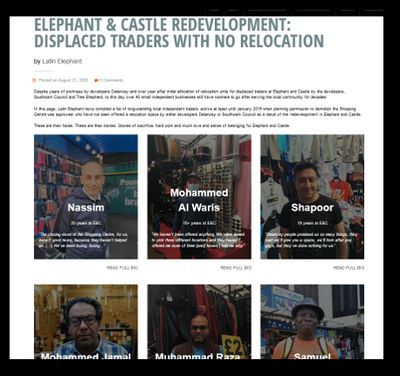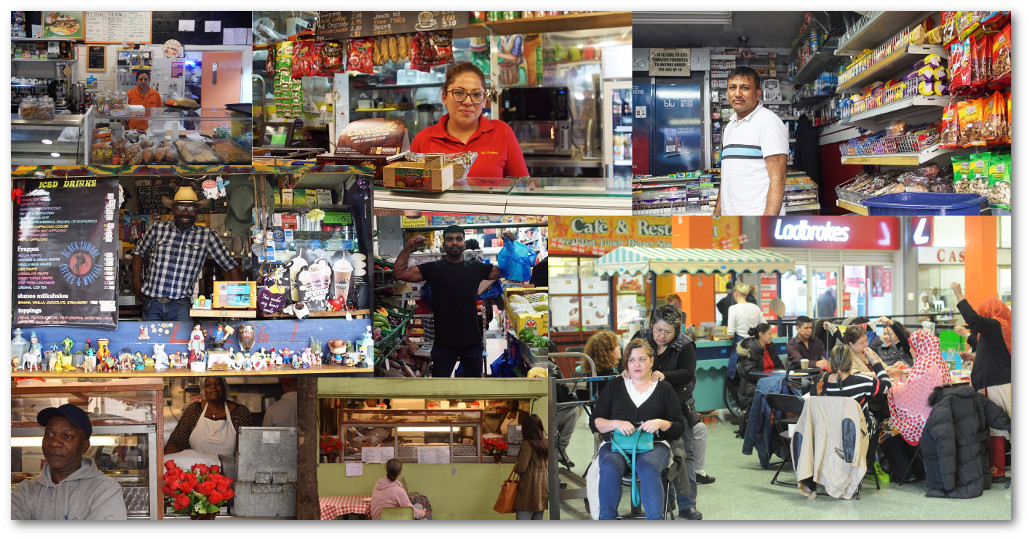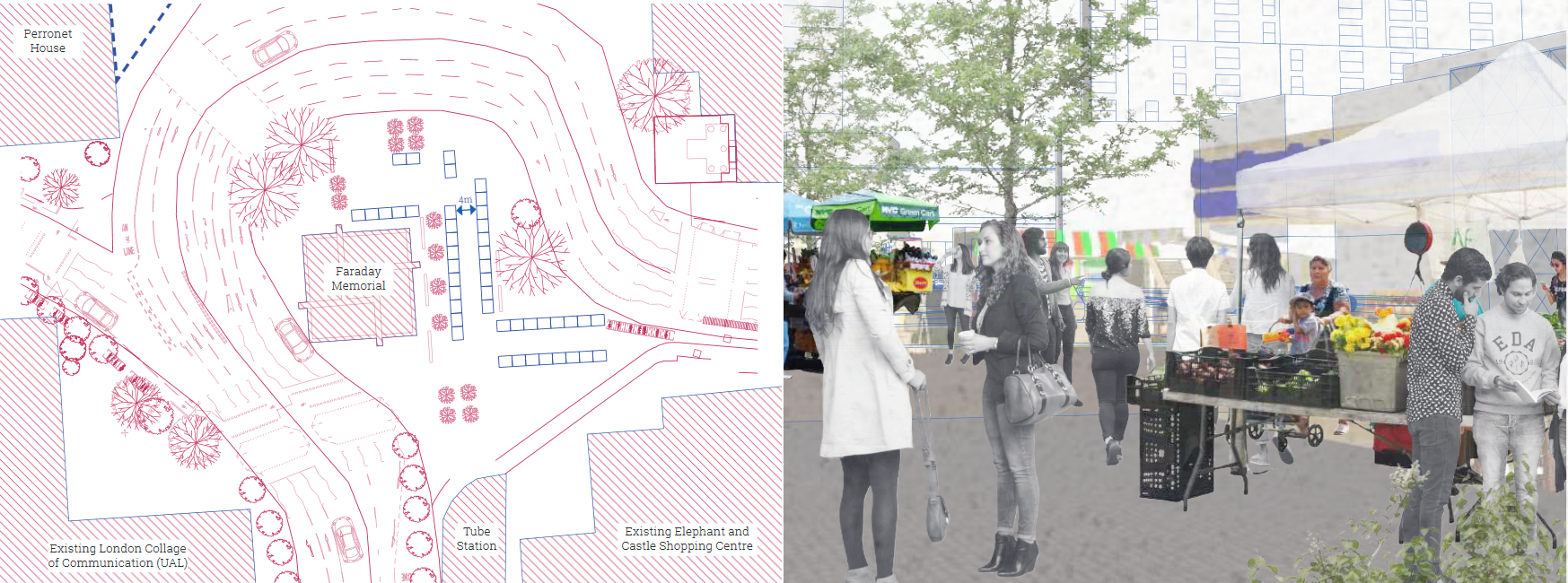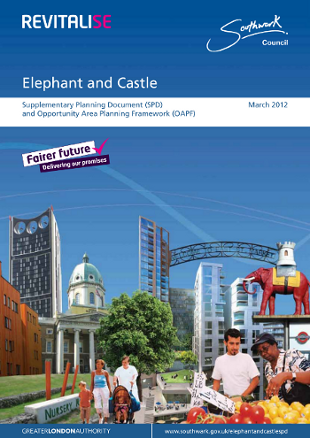
Shopping centre developer Delancey and Southwark Council have mounted a desperate defence of their failed trader’ relocation strategy, with a joint statement claiming that all qualifying businesses have been relocated or offered relocation options ‘without question’. The centre is due to close on Thursday.
The very same joint statement reveals, however, that only 40 traders have actually been found new premises through the relocation process, a fraction of the approximately 130 independent businesses identified in January 2018 by Southwark, as operating at the Elephant [^1]. Much of the rest of the joint statement is a lengthy account of how this much larger figure has been was reduced to just forty traders through the relocation process. The statement also outlines ‘options’ available to the unfortunate traders who have nowhere to go and makes self-justifying excuses for this miserable outcome.

The joint statement also attacks what it calls ‘uncorroborated statistics’, which show that at least 40 traders will have nowhere to go when the centre closes, and online ‘misinformation’. This is clearly aimed at the Up the Elephant campaign, including the 35% Campaign and, in particular, Latin Elephant, who have worked tirelessly to support the traders.
Latin Elephant has issued its own rebuttal, noting that Delancey and Southwark have now themselves admitted in the joint statement that only 40 traders have been found new premises, ‘leaving about 40 traders who have been trading at least since January 2019 (as per the s106 agreement) without alternative premises’. Latin Elephant’s rebuttal also includes links to all the supporting research evidence on the fate of traders, through the regeneration process. This research names the independent businesses, maps their location and gives relevant dates.
Who gets to be eligible?
As Latin Elephant explains, while 130 independent businesses were recognised by Southwark as operating within the red-line of the development in January 2018 (the date of the first hearing for the shopping centre planning application), Delancey and Southwark take only 79 ‘eligible’ businesses as the base-line in their account of the relocation process, excluding many long-standing businesses. Delancey and Southwark then whittle the 79 ‘eligible’ businesses down to forty businesses, in successive stages– 64 applications received, 61 valid, 40 found new premises. (Southwark has acknowledged on its website that there are 33 eligible traders remaining without a relocation offer, but that is not mentioned in the joint statement).
The ‘options’ for those not awarded premises are to search for somewhere else themselves, through a commercial premises database. If they do not find anywhere, they will receive payments of around £8000. The inadequacy of these ‘options’ hardly needs stating. The database has been a constant source of frustration to traders, who have criticised it for being out of date and listing premises that are simply too expensive and too far away. An £8000 payment is also very little compensation for the loss of a livelihood, built up over many years and a long way short of what is needed to re-establish a business; one of our previous blogposts has the stories of traders of up to 20 years standing who are in this situation.

No commitments
Delancey and Southwark’s joint statement also takes pains to say that there was never a commitment to relocate all the traders. This is shamefully true – it is to Southwark’s great discredit that it ignored evidence from Latin Elephant that this situation was bound to arise, because there was only half the space required for a proper trader relocation in Delancey’s redevelopment plans, but Southwark went ahead and approved the plans nonetheless. Notwithstanding the lack of a formal commitment, Southwark still created the impression that all traders would be accommodated; when asked directly by councillors at the planning meeting for Castle Sq, one of the relocation sites, whether ‘given all of the different site…does that cover…enough sites for all of the current number of traders…..How many short would we be roughly?’ council officers replied ‘…across the piste there should be sufficient’. By their own testimonies traders also confirm that they have been strung along with false hopes of relocation space throughout the relocation process.
Stall-holders do it for themselves
Faced with the loss of their businesses the market stallholders who occupy the ‘moat’ that surrounds the shopping centre have banded together to draft a Proposal for more market stalls at the Elephant, after the centre’s closure. The Proposal was received by Florence Eshalomi, London Assembly member for Lambeth and Southwark, who met the traders at City Hall, gave strong support and undertook to take up the matter with Mayor Sadiq Khan. Local councillor Cllr Maria Linforth-Hall also met the traders and is giving her support, as are Assembly members Caroline Pidgeon and Sian Berry, Assembly Member and the Green Party candidate for Mayor.

The Camberwell and Peckham Labour Party Constituency Party also passed a motion in support of the traders’ Proposal at their meeting last week.
…while UAL looks after itself
Sadly, the University of the Arts London (UAL) has not felt able to help the traders, nearly all of whom come from black and ethnic minority backgrounds and despite its professed commitment to Black Lives Matter. In letters received by Southwark Law Centre UAL declines to either withdraw from the shopping centre redevelopment which will supply it with a new campus for the London College of Communication on the very spot traders now occupy, nor to offer support for the traders’ Proposals for additional market stalls. UAL is instead happy to take Southwark and Delancey’s assurances that all traders are being properly treated at face value.
Division and attrition
Southwark and Delancey’s treatment of the people who actually work at the Elephant now can be summed up as ‘division and attrition’. The relocation strategy and traders’ participation in decisions on their future were only put in place after Delancey had gained planning committee approval for their scheme. Latin Elephant’s advocacy on behalf of all the BAME traders was also resisted. The s106 legal agreement (negotiated between Southwark, Delancey and UAL), which determines who was ‘eligible’ and who was ineligible for relocation support uses formal criteria around leases and licences that do not reflect the way the community has developed over the years. Alongside this, the decline in footfall and in the physical fabric of the centre led to a decline in trade that unsurprisingly meant that traders left before the centre’s closure, wearied beyond hope by the whole ‘regeneration’ process.
For Southwark and Delancey this is all part of the natural process of regeneration and relocating just 40 out of 130 traders is a triumph to be proud of. For the traders and the campaigners who support them it is deplorable outcome which exposes the hollow promise that the Elephant and Castle regeneration is providing a 'fairer future' for the local community.
 Southwark Council's Planning Framework for E&C regeneration.
Southwark Council's Planning Framework for E&C regeneration.
Going, but not forgotten...
You can see a short valedictory film, by Emile Scott Burgoyne, celebrating the Elephant community here.
[^1]: See joint statement, heading 'Who is being relocated?', first bullet point.